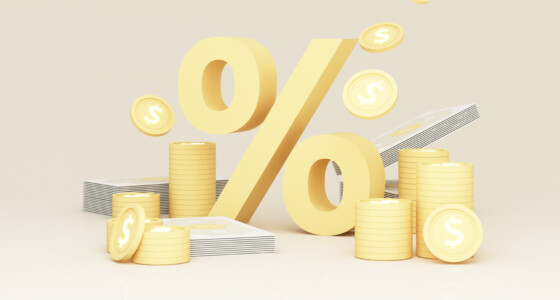

As an investor, you know the importance of buying stocks when they’re undervalued. An oversold stock has declined substantially in price, often due to external factors unrelated to the company’s fundamentals. Recognizing oversold stocks presents an opportunity to buy a solid company’s shares at a discount. However, oversold stocks also come with risks if the factors driving the price decline continue or worsen. With an analytical eye, you can find diamonds in the rough and potential bargains among oversold stocks. In this article, we explore what it means for a stock to be oversold, how to identify good candidates, strategies to determine if it’s a value opportunity or value trap, and examples of oversold stocks that went on to outperform.
What Does It Mean When a Stock Is Oversold?
An oversold stock means that a stock’s price has fallen dramatically in a short period of time. Traders use technical indicators like the Relative Strength Index (RSI) to determine if a stock is oversold. A stock is typically considered oversold when the RSI drops below 30, indicating the stock may have been pushed down too quickly.
When a stock is oversold, it often means investor sentiment has become too negative. The herd mentality has taken over, with many investors selling in a panic. However, oversold conditions are frequently good buying opportunities for value investors. The stock’s fundamentals have likely not changed, but it is temporarily undervalued due to extreme pessimism.
For example, if a company reports quarterly earnings below analysts’ expectations, the stock price may plunge as investors overreact. Even though the news is disappointing, it does not necessarily justify such an exaggerated sell-off. The stock becomes oversold, creating a chance to buy at a bargain.
Oversold stocks often rebound quickly once the panic subsides and cooler heads prevail. As the RSI rises above 30, more investors recognize the stock as undervalued and start buying again. The rebound can be swift, so oversold stocks offer the potential for solid short-term gains. However, there is also a chance the stock continues declining, so oversold conditions come with risks.
In summary, an oversold stock has a price that has dropped sharply in a short time period. But the pessimism that caused the oversold condition may be overdone, offering an opportunity to buy a good stock at a temporary discount. With risks and rewards both high, oversold stocks can be a fruitful area for enterprising investors.
How to Identify an Oversold Stock
To identify an oversold stock, look for the following signs:
Price Drop and Increased Volume
A sharp drop in price, especially over a short period of time, signals the stock may be oversold. Check if the volume of shares traded has also spiked. This indicates more sellers than buyers, driving the price down. If the company’s fundamentals remain strong, the stock price should rebound once the panic selling subsides.
Technical Indicators
Use technical indicators like the Relative Strength Index (RSI) and stochastic oscillator to determine if a stock is in oversold territory. An RSI below 30 suggests a stock is oversold, while a stochastic reading below 20 means the same. These indicators measure the speed and magnitude of recent price changes to determine if a stock has been overbought or oversold.
Sentiment Changes
Look for recent news or events that could have temporarily soured investor sentiment and pushed the stock into oversold status. Things, like lowered guidance, legal issues, or wider industry pressures can all negatively impact sentiment. If the issues are temporary, sentiment should stabilize, and the stock price recover.
Evaluate the Fundamentals
Make sure the company’s fundamentals remain strong and haven’t materially changed. Revenue, earnings, cash flow, debt levels, and growth prospects should remain stable. If the fundamentals have weakened significantly, the stock price drop may be justified and not a sign it’s oversold. An oversold stock with strong fundamentals is in the best position to rebound.
By identifying these signs, you can spot oversold stocks with the potential for price recovery and the opportunity to buy in at a discount. But always do your own research to confirm the stock is oversold before investing.
The Difference Between Oversold and Overbought
The terms “oversold” and “overbought” refer to temporary conditions in the stock market based on supply and demand. A stock is considered oversold when its price has fallen sharply, indicating more sellers than buyers. An overbought stock has risen quickly, signaling more buyers than sellers.
Oversold Stocks
An oversold stock has a price that has decreased substantially in a short period of time. This often indicates that investors have sold the stock quickly, driving the price down. The price drop suggests the stock may have become undervalued. Savvy investors will look for oversold stocks, expecting the price to rebound as the supply and demand normalize.
When a stock becomes oversold, it may represent an opportunity to buy at a bargain price. However, it also carries additional risk if the price continues to decline. Investors should do thorough research to determine if the price drop is temporary or if there are underlying issues with the company or sector. Some signs an oversold stock may recover include:
- Strong fundamentals: The company has solid financials, management, and growth prospects. The price drop was due to temporary market dynamics, not weakening business conditions.
- Oversold indicators: Technical indicators like the Relative Strength Index (RSI) show the stock is at oversold levels, suggesting the price decline has been overdone. RSI levels below 30 are considered oversold.
- Support levels holding: The stock price holds support levels where buyers come in, indicating the potential for a rebound. If support breaks, further price drops are more likely.
- Positive catalysts: Upcoming events like a product launch, earnings report, or economic data could drive the price back up. The oversold conditions provide an opportunity to buy before the catalyst.
While oversold stocks present buying opportunities, invest with caution. Do thorough research and consider your risk tolerance before investing in any stock, especially one that has declined substantially in price.

Benefits and Risks of Trading Oversold Stocks
When a stock becomes oversold, it can present an opportunity to buy shares at a discount. However, oversold stocks also come with risks that investors should consider before trading.
The main benefit of trading an oversold stock is the potential for gains if the stock rebounds. When a stock drops significantly in price, it is often due to temporary factors like a missed earnings forecast, a product recall, or overall market volatility. If the issues that caused the stock drop are resolved, or investors realize the sell-off was overdone, the stock price may recover. Investors who buy when the stock is oversold can benefit from this rebound.
However, there are risks to trading oversold stocks. The stock may continue to decline further, leading to losses for investors who buy too early. The issues impacting the stock may take longer to resolve or may be more serious than originally thought. It can also take time for investor sentiment to improve, and the stock may stay depressed for an extended period.
Traders should thoroughly research an oversold stock to determine the likelihood of a rebound before buying. Review recent news reports and company filings to understand the reasons behind the price drop and see if the issues appear temporary or more long-lasting. Check key metrics like revenue, earnings, and guidance to assess the company’s financial health and growth prospects. An oversold stock in a healthy, growing company is more likely to recover.
While oversold stocks present opportunities, they also come with risks. By understanding the factors behind a price drop and determining the potential for a rebound, investors can make informed decisions about whether an oversold stock is worth the risk. With careful analysis, trading oversold stocks may lead to significant gains once the stock returns. However, there is always a chance the stock continues to decline, so risk tolerance and stop-loss limits are important to consider.
Case Studies: Real-World Examples of Oversold Stocks
Oversold stocks provide a prime opportunity for investors. By closely following stocks that interest you, you can spot the optimal time to buy in. Here are a few real-world examples of oversold stocks that recovered nicely:
Apple Inc.
In December 2018, Apple Inc. (AAPL) shares fell nearly 40% from their October high, a massive drop that left the stock oversold. However, Apple’s fundamentals were still strong, with solid revenue and earnings growth and a reasonable valuation. Investors who purchased shares around the December low were rewarded a 50% gain over the next 6 months as the stock price recovered.
Boeing
In 2019, Boeing (BA) shares plunged over 20% following the grounding of the 737 Max aircraft after two crashes. The stock was clearly oversold, given Boeing’s market dominance and long-term growth prospects in the aerospace and defense industries. Investors who saw the opportunity to buy an oversold stock were rewarded with a 25% gain in just 3 months as the stock price rebounded.
Carnival Cruise Line
The cruise industry was decimated in 2020, with Carnival Cruise Line (CCL) shares falling over 80% at their lowest point. However, with a solid balance sheet, dedicated customer base, and the likelihood of a post-pandemic travel rebound, Carnival seemed oversold. Investors who took a chance on the heavily oversold stock have seen a 120% gain, though shares remain well below their pre-pandemic highs.
In each case, the oversold stocks recovered in a relatively short period of time based on their underlying fundamentals and future growth prospects. By closely monitoring the market, individual investors can find opportunities to buy oversold, undervalued stocks before a rebound. With patience, these investments can lead to significant gains.
Conclusion
As an investor, it’s important to understand the concept of oversold stocks and how to capitalize on the opportunities they present. By identifying oversold conditions, monitoring key indicators, and timing your trades wisely, you can purchase stocks at a discount and benefit as they recover. While the strategy does come with risks, the potential rewards of higher returns and increased profits make oversold stocks worth watching. With patience and prudence, you’ll find yourself well-positioned to take advantage of the next oversold opportunity in the market.










